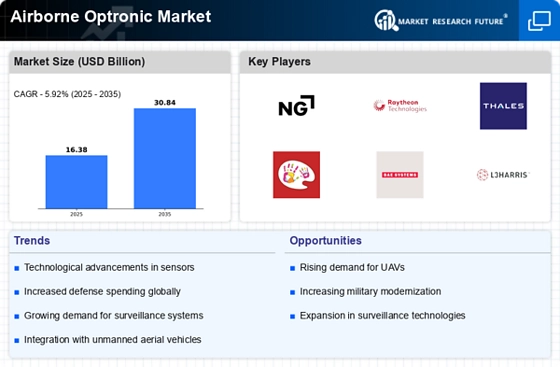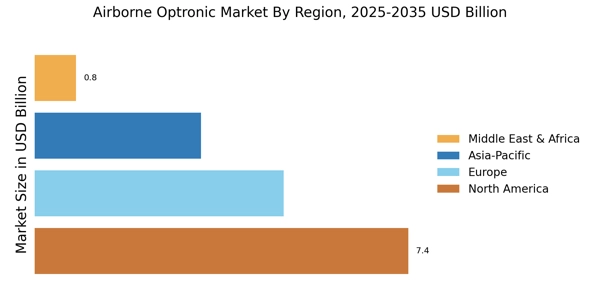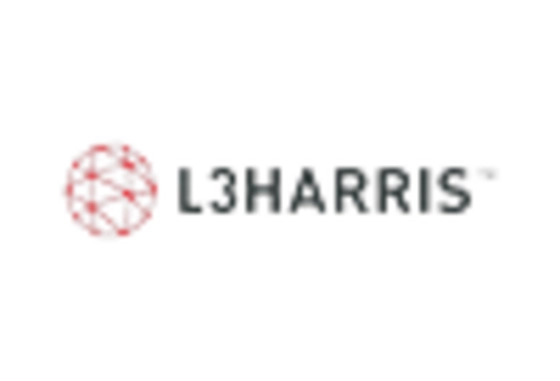Rising Military Expenditures
In recent years, there has been a notable increase in military expenditures across various nations, which is positively impacting the Airborne Optronic Market. Countries are investing heavily in modernizing their defense capabilities, including the acquisition of advanced airborne optronic systems. This trend is particularly evident in regions with heightened security concerns, where governments are prioritizing the enhancement of surveillance and reconnaissance capabilities. According to defense budget reports, military spending is expected to rise by approximately 3% annually, further fueling demand for advanced optronic systems that provide critical intelligence and operational advantages.
Emerging Commercial Applications
The Airborne Optronic Market is witnessing a diversification of applications beyond traditional military uses. Emerging commercial applications, such as aerial photography, agriculture monitoring, and environmental surveillance, are driving demand for airborne optronic systems. As industries recognize the value of aerial data collection, the market for these systems is expected to expand. Reports indicate that the commercial UAV market is set to grow at a rate of approximately 8% annually, which will likely contribute to the increased adoption of airborne optronic technologies in various sectors. This trend reflects a broader acceptance of advanced surveillance and imaging technologies in non-military applications.
Growing Focus on Border Security
The Airborne Optronic Market is also benefiting from an increased focus on border security and surveillance. Governments are recognizing the importance of monitoring borders to prevent illegal activities and enhance national security. As a result, there is a growing demand for airborne optronic systems that can provide real-time surveillance and reconnaissance capabilities. This trend is particularly pronounced in regions facing challenges related to illegal immigration and smuggling. The market for airborne surveillance systems is projected to expand, with estimates indicating a potential growth rate of around 6% over the next few years, driven by the need for effective border management solutions.
Technological Innovations in Sensors
The Airborne Optronic Market is experiencing a surge in technological innovations, particularly in sensor technologies. Advanced sensors, such as infrared and electro-optical systems, are becoming increasingly sophisticated, enhancing the capabilities of airborne platforms. These innovations allow for improved target detection, tracking, and identification, which are critical for military and surveillance applications. The market for airborne sensors is projected to grow significantly, with estimates suggesting a compound annual growth rate of over 5% in the coming years. This growth is driven by the need for enhanced situational awareness and operational effectiveness in various defense and security operations.
Integration with Unmanned Aerial Vehicles (UAVs)
The integration of airborne optronic systems with unmanned aerial vehicles (UAVs) is a significant driver for the Airborne Optronic Market. UAVs equipped with advanced optronic systems are increasingly being utilized for various applications, including surveillance, reconnaissance, and intelligence gathering. This integration enhances the operational capabilities of UAVs, allowing for more effective missions in both military and civilian contexts. The UAV market itself is projected to grow substantially, with estimates suggesting a compound annual growth rate of over 10% in the coming years. This growth is likely to further stimulate demand for advanced optronic systems that can be seamlessly integrated with UAV platforms.


















Leave a Comment